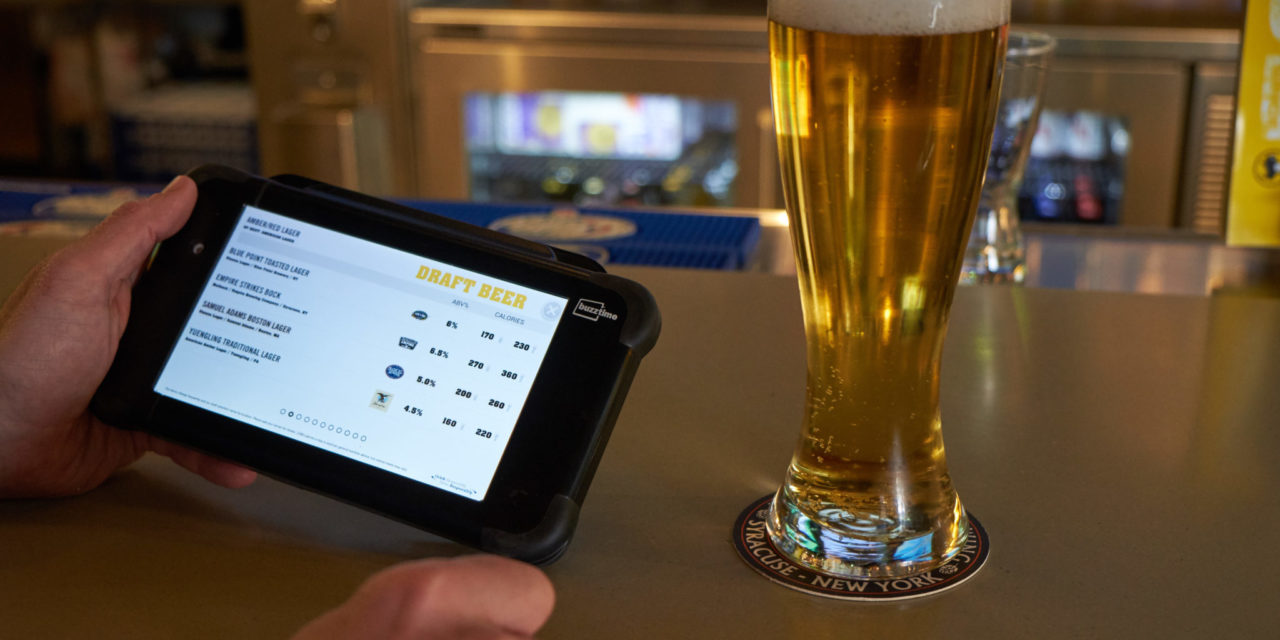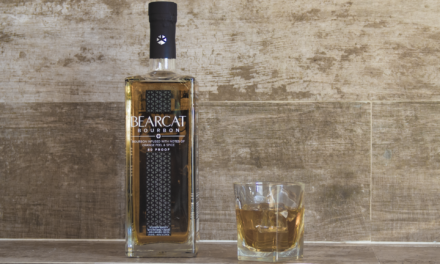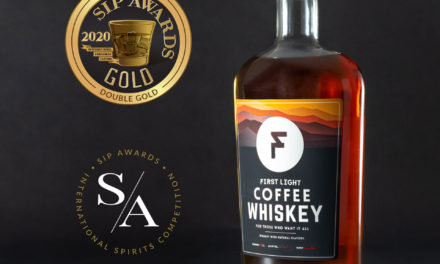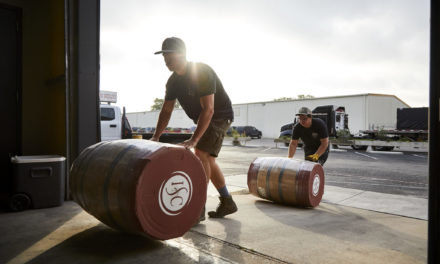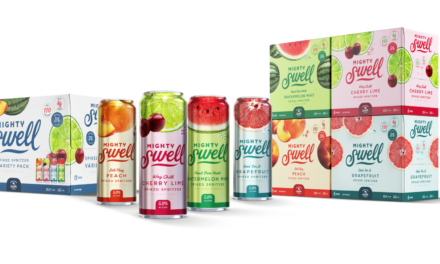You’re at a restaurant with a digital wine list. As you peruse the list, your attention stays longer on the wines that have captured your interest. Somewhere in Dataland, how long you’ve lingered over each wine is recorded. Eventually, you narrow your choices down; as you scroll between your two considered wines, you’re creating more information that’s captured by Dataland before you even make a final decision.
“Dataland,” obviously, isn’t a real place, but instead represents the countless real and virtual places where data is stored—from tablet wine lists, sales of beer pints, whiskey sold at the liquor store, and anywhere else real-time digital beverage data is captured. When that data merges to form large data sets, it’s known as big data.
Producers, brands, stores, and restaurants don’t always know how to mine through big data to use it as a competitive tool and turn it into magic numbers. Fortunately for them, several companies now exist to do the analytics and create reports that can help wine, beer, and spirits producers and sellers perform more efficiently and profitably, while also better serving their customers.
Solving a puzzle
In 2016, Enolytics brought the power of big data, gathered from various platforms, to the wine industry. “We see the wine consumer as a puzzle,” says Cathy Huyghe, co-founder and CEO of the Atlanta, Ga.-based company. “Consumer behavior and sentiment has been a blind spot for a long time, but it shouldn’t have to be that way. Consumers are telling us about themselves on all these different platforms. Every platform has a unique piece to add to the puzzle.”

“Consumer behavior and sentiment has been a blind spot for a long time, but it shouldn’t have to be that way.” —Cathy Huyghe, Enolytics
In the digital wine list scenario, when the data is analyzed and interpreted, it can help a restaurant further refine its list based on the steps leading up to a choice.
“A restaurant can see how long a consumer has lingered over a sauvignon blanc before choosing a vermentino,” Huyghe says. “They can find out who else’s wine the consumer considered before making a choice. They can follow the consumer through their journey because we can follow their digital trail.”
Huyghe sees Enolytics as “Switzerland” for big data, meaning it will work with any platform—even if it isn’t directly in the wine industry—that has information that could be useful for Enolytics’ clients. For example, Enolytics can work with a satellite company that has data on terroir of specific vineyards, and overlay that information with consumer data culled from another source about the wines that were produced from that vineyard. “This way, we can link how a consumer behaves around a wine using data about the terroir of where that wine was produced,” says Huyghe.
“It’s amazing what 1s and 0s can tell you,” she adds, referring to binary code.
A competitive edge
Data is often gathered from consumers who may not be aware their information is being shared, but Enolytics is careful to collect only anonymous data to protect consumers. The company doesn’t see names or email addresses, and street addresses are given to them in code. If working with a particular winery on a project related to its customer list, the winery decides what information to provide (and it’s used only for that discretely defined project).
“We don’t want personal information,” says Huyghe. Rather, she explains, the goal of Enolytics is to deliver insights to their clients in accordance with a scope that’s been defined. Before Enolytics launched, gathering and interpreting insights generated from several sources of big data was difficult in the wine industry. Now, Enolytics can supply that information to the wine industry around the world.
Huyghe believes that, for the most part, once they have it, brands know exactly what to do with the insights they’re given. She also believes that U.S. companies would benefit from paying more attention to big data. “Most of the traction we’ve seen so far hasn’t come from the United States. It’s come from foreign companies looking to get a better understanding of the U.S. market,” she says.
“Clients from abroad have a competitive edge because of their investment in this kind of data.” Huyghe adds that interest has been so great in Spain, the company recently launched Enolytics Spain.
Competitive edges take many forms, including understanding whom the competition is. Enolytics recently worked with a client, compiling information on its high-priced red wine. Through the use of big data, Enolytics determined where consumers who were interested in the client’s wines were concentrated, as well as which competitors’ wines those same consumers were interested in.
“When a consumer picks up a bottle of wine in a store, they almost always pick up another bottle or two as well,” Huyghe explains. “We were able to tell our client what those other brands are. Now our client knows—but their competitors aren’t on board with this kind of research.”
As a direct result of the information Enolytics supplied, the client was able to reallocate their wines to retailers and restaurants where there were concentrations of interest in their own wines as well as their competitors’ wines.
Tapping information
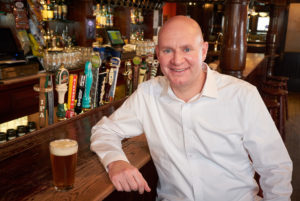
“We have tools to suggest which styles and brands to bring on and which are the highest movers and shakers in the market.” —Mark Young, BeerBoard
Based in Syracuse, N.Y., BeerBoard has helped clients gain an advantage over their competitors by using big data for more than 10 years. Unlike Enolytics, which gathers data from outside platforms, BeerBoard gathers real-time data by placing flow sensors on every tap in a client’s bar or restaurant.
BeerBoard’s founder and CEO, Mark Young, comes from a beer distribution background, where he saw a big gap in logistics and market data that needed to be filled. He created a proprietary, cloud-based application that’s used to make a bar’s operations more efficient.
“We’re focused on the largest operators in America,” says Young. “We now manage more than $1 billion in retail draft revenue and more than 50,000 products.” Some of those large operators include Buffalo Wild Wings, Hooters, and Twin Peaks. BeerBoard also works with independent bars and brewpubs. Whether it’s large or small, any bar or brewer can use BeerBoard’s SmartBar technology to track every ounce of beer that comes out of a tap.
On average, the yield from a keg is 78 percent. Using BeerBoard’s data-driven technology, clients yield an average of 95 percent from a keg, selling five more pints per keg. If a 20-tap bar sells beer at an average of $6 per pint, that savings adds up to more than $14,000 in gained revenue annually.
BeerBoard’s data gives bars real-time insights on which taps are moving the best, so they can plan promotions and change brands that aren’t moving at an acceptable rate.
“We have tools to suggest which styles and brands to bring on and which are the highest movers and shakers in the market,” says Young. “A bar can bring in the right brands and improve the guest experience.”
By reconciling the actual pours versus what is sold at the register, the data also helps bars track loss by the day, hour, and shift. This means a problem can be addressed immediately, whether it’s a bad tap or an employee-related issue. BeerBoard also offers clients the ability to change their online and digital in-location menus easily, giving customers an up-to-date menu that includes the bar’s full offerings.
Searching for insight
Anyone who’s searched online for a specific alcoholic beverage probably knows Wine-Searcher’s website. But many probably don’t realize the website’s free data insights are available to the public, along with additional paid data insights gathered from 5 million monthly users.

“We’re making data accessible to everyone—from the smallest to the largest producers of beer, wine, and spirits.” —Suzanne Kendrick, wine-searcher.com
“With 5 million wine experts on Wine-Searcher each month, we generate data from what people really do,” says Suzanne Kendrick, who’s in charge of global growth for the Auckland, New Zealand company. “What are they searching for? What’s the demand for a specific wine? What’s the supply? We can answer questions like this in every country.”
By searching for a specific product on wine-searcher.com, anyone who’s interested can find the current market price at various stores and learn what local retailers carry it. Many people don’t notice, though, that their search findings also include more general market data. By clicking on the market data tab, there’s information that businesses can use to increase their competitiveness.
The free version gives two years of price history and a product’s availability and search rank over time. A Pro Version, available for $60 per year, gives five years of the same data plus the ability to search by sizes, currencies, and more.
Wine-Searcher can also provide more customizable data analysis, such as Market Demand Reports that can rank a company’s product against others in the market; or Bespoke Market Reports for a specific brand that will dig into its markets, wines, consumers, and producers or brands to help grow market shares and open up new markets.
Between the free data, the Pro Version, and customizable reports that start at $500, Wine-Searcher has data that almost any sized company can afford to use.
“People think they need more skills than they have to use data,” says Kendrick. “The big companies are using it more than the little guy. But you don’t have to be a big data analyst—we do that. We’re making data accessible to everyone—from the smallest to the largest producers of beer, wine, and spirits.”
The bottom line is, any size producer, brand, store, bar or restaurant is better able to compete in an increasingly data-driven marketplace when it has the advantage of big data insights tailored to its specific needs.

